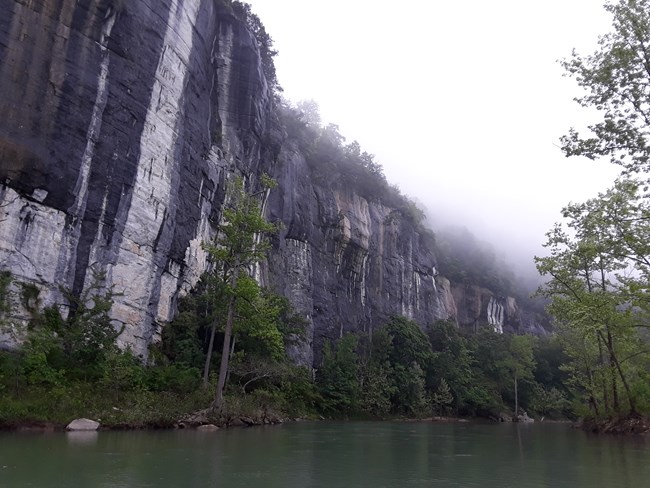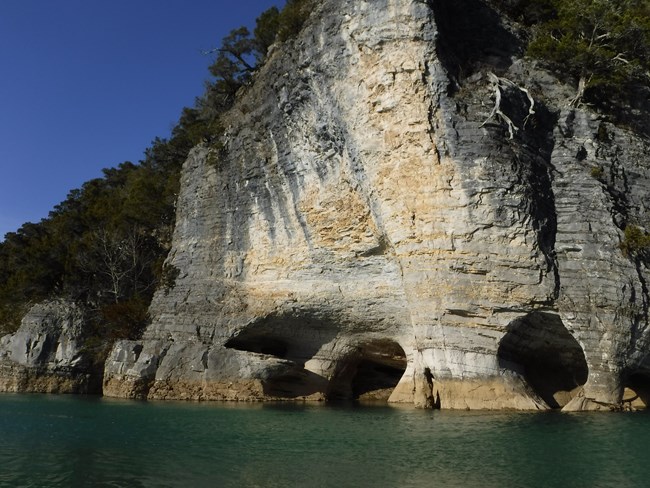Part of a series of articles titled Phenomenal Science.
Previous: Turquoise Waters Explained
Article

NPS
Often we see multicolored, vertical streaks on the sandstone bluffs along the banks of the Buffalo River. What causes these variations?
These are mostly mineral stains. During heavy rains, water runs down the vertical bluffs, carrying and depositing minerals along the way. Black/gray stains come from the minerals manganese and zinc. Red/brown stains come primarily from the mineral iron. The parts of the bluff that stay driest are bleached white by the sun. For more information, check out Climate and Geology - Buffalo National River (U.S. National Park Service) (nps.gov).

NPS
The limestone bluffs along the Buffalo River can look quite different than those composed of sandstone. Limestone is a permeable rock type, so the water that runs down the bluffs gets soaked into the rock and takes mineral deposits with it. This causes mineral staining on limestone bluffs to be far less prominent than that of sandstone bluffs; the vertical streaks often start at the top of the bluff and disappear a short distance down. For more information, check out Climate and Geology - Buffalo National River (U.S. National Park Service) (nps.gov).
What are some other clues in this photograph that indicate the limestone’s permeability?
Part of a series of articles titled Phenomenal Science.
Previous: Turquoise Waters Explained
Last updated: June 12, 2021